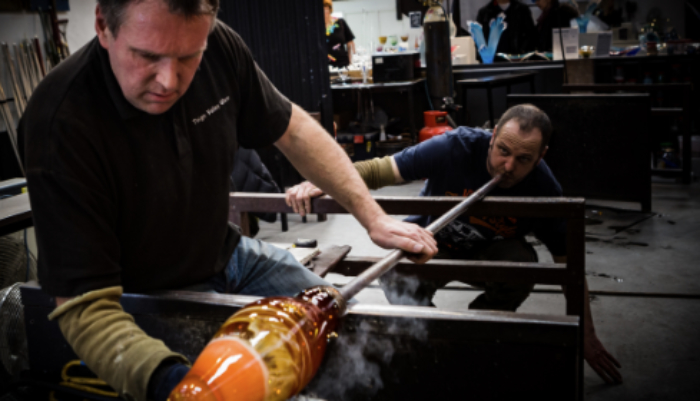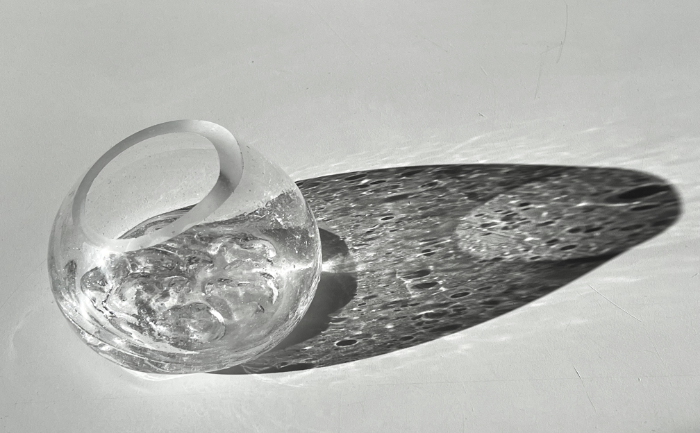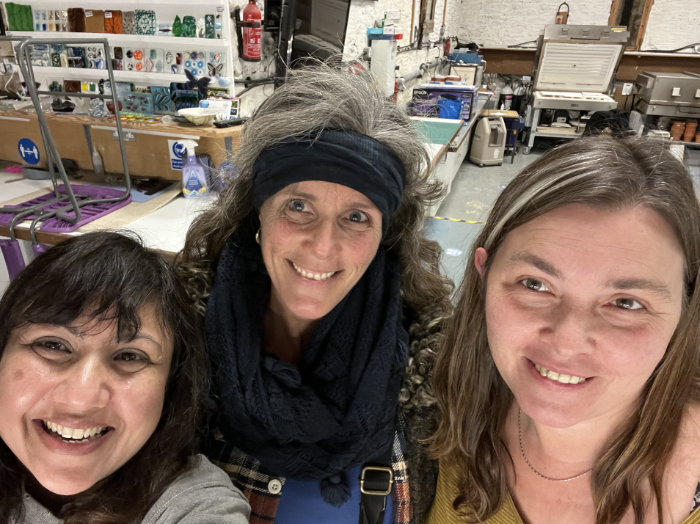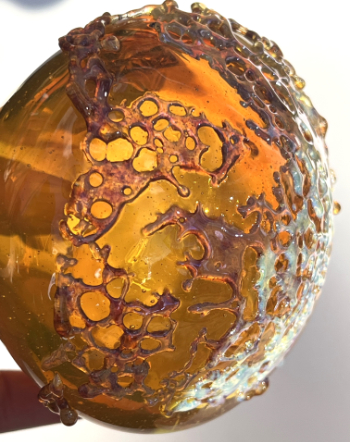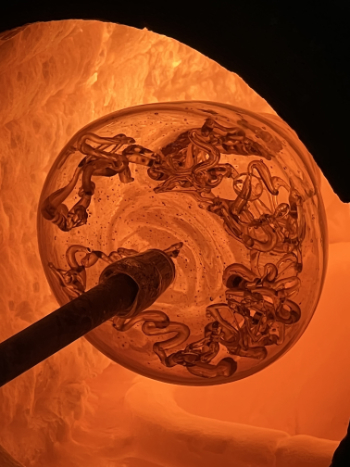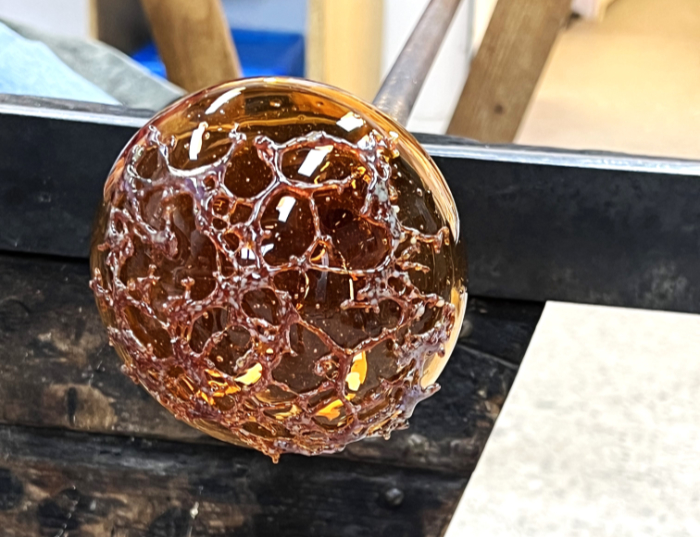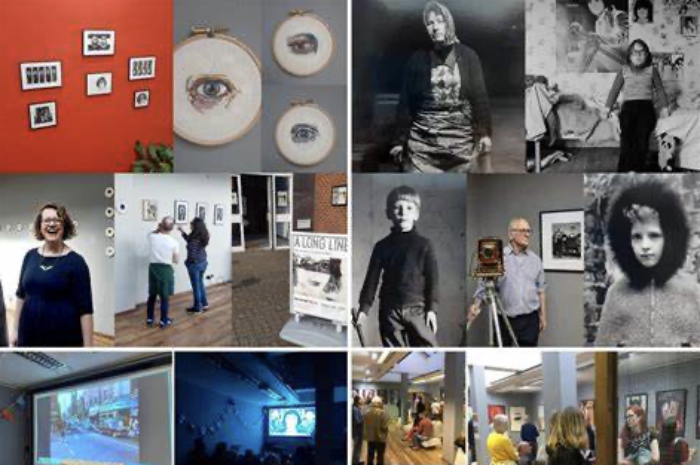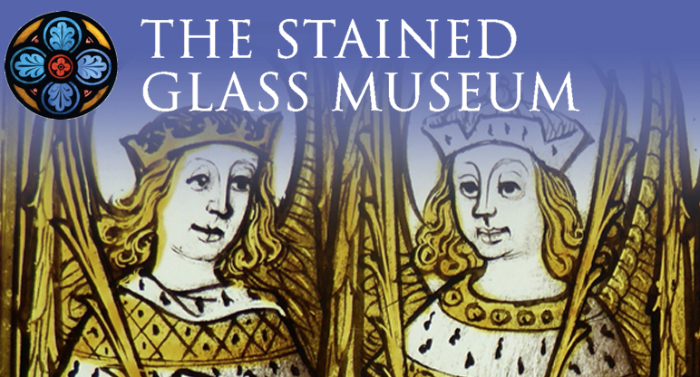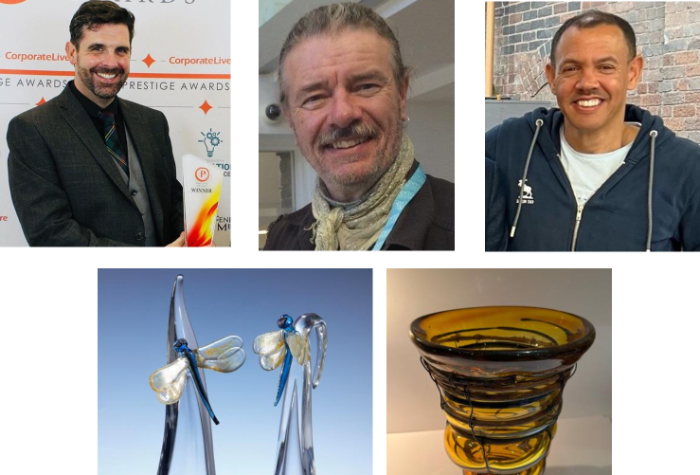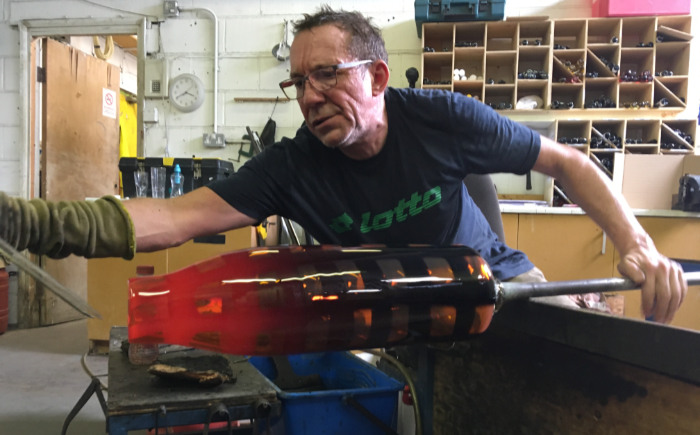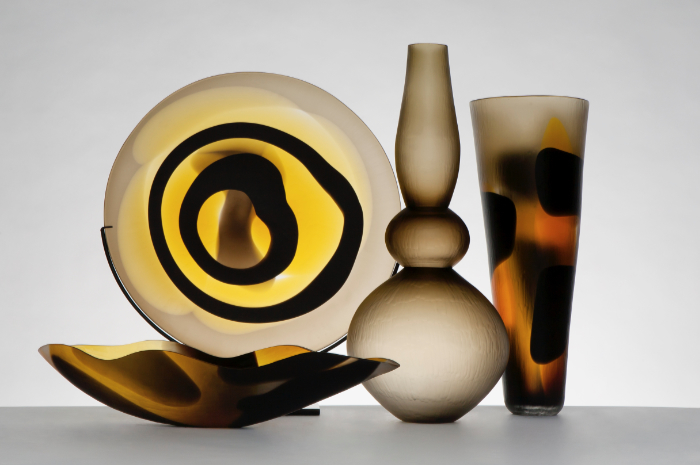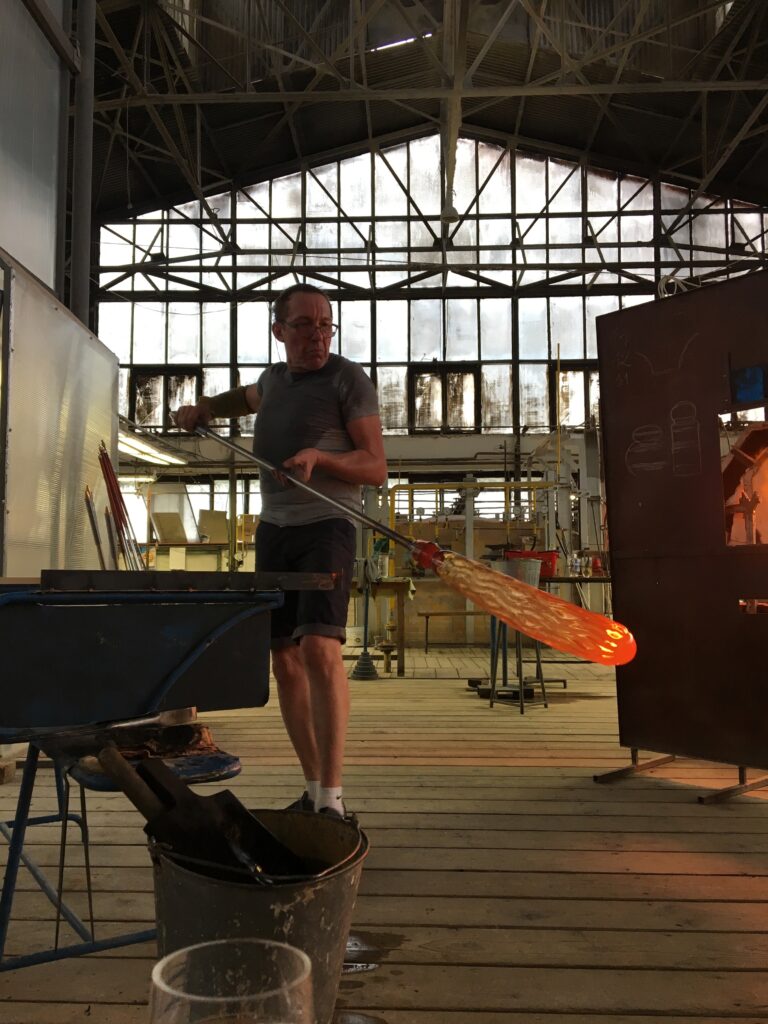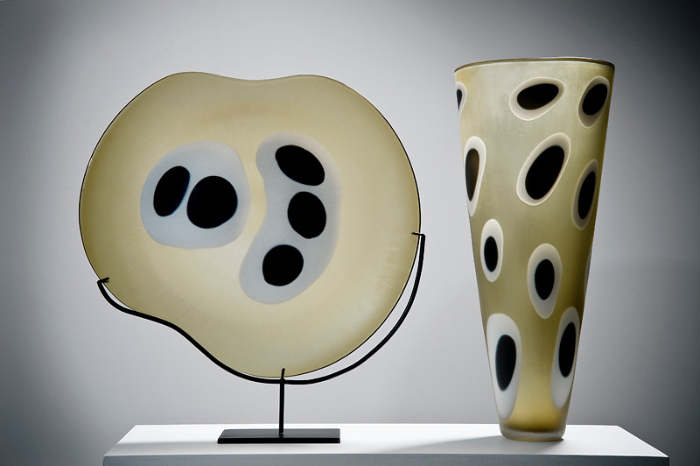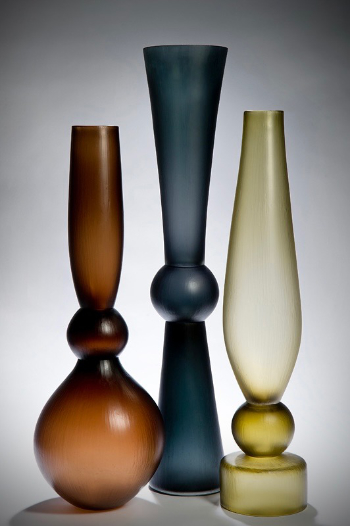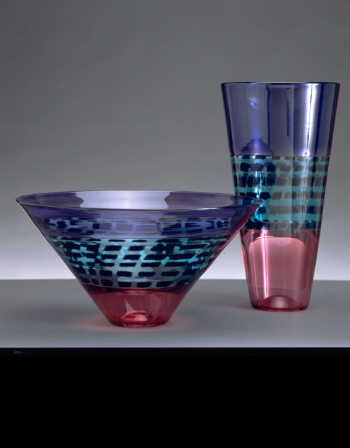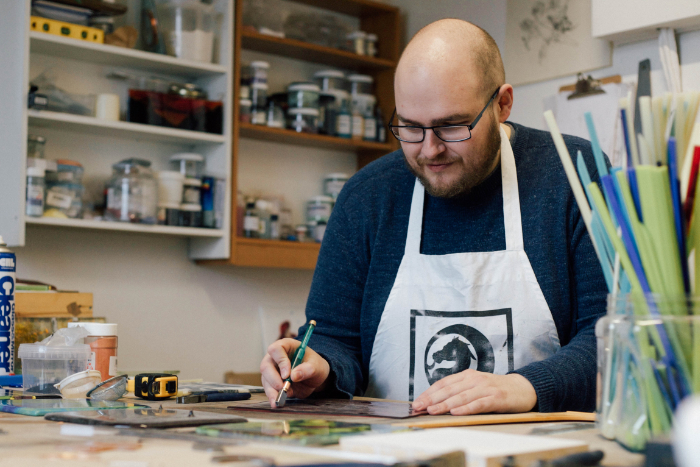
A reflection on his life by Catherine Dunstan
Simon Alderson was a glass artist and teacher from Darlington, UK. He specialised in traditional painting techniques and glass fusing with powders, but he was highly skilled in many other methods of glass-working too. We sadly lost Simon on 19 January 2024, following a short and sudden illness.
I realise that first paragraph is quite formal. It’s so hard to know what to write, how to condense, how to encapsulate a life that was so magical and complex. I’ve spoken to many people in the glass community over the last few weeks who remember Simon, and each person has something new to share; a cheeky anecdote or praise for how he helped or sometimes transformed their relationship with glass. To anyone who didn’t have the chance to meet him, please know that he was a fantastic friend, artist and teacher, and that he was naughty, silly and generous in all conceivable ways. Losing him unexpectedly at the age of 36 has left an unimaginable hole in the lives of not only his family and friends, but in the lives of hundreds of students who were lucky enough to have had him as a teacher.
Simon first found glass at an evening course in Darlington. He fell in love with the medium instantly, and this joy led him to Sunderland University, where he developed his skills at the National Glass Centre. Shortly afterwards, he moved to Bristol, where he worked for a decade with Creative Glass Guild, initially as an order packer, but quickly becoming a lead teacher and supervisor. He was a generous and encouraging teacher with many returning students, with whom he maintained friendships.
As an artist he was led by a fascination with nature, particularly birds. He kept sketchbooks and often used his drawings as references in his making. He had a real skill in capturing not only the colour and beauty of birds, but their personalities. His work inspires joy in many, and he was able to become self-employed as an artist in 2021. He was always producing new work, quietly confident in his skills.
Simon and I worked together, and we shared a studio for many years. We would go straight from work to the studio, picking up a cheeky M&S meal deal and settling down to work in time for The Archers on the radio. He let me use his tools and his kiln, which meant I could learn and make work to sell, eventually enabling me to buy my own kiln. He would watch me make mistakes, frequently calling out, “Babe, what you doing?”. He just let me absorb knowledge in a way you can only do when you spend a lot of time with someone incredibly skilled.
I have never met anyone with a broader technical knowledge of glass fusing than Simon Alderson had, and he was so patient in letting me pick at that knowledge, from the day I met him to the week we lost him. I never would have been able to afford to purchase that knowledge. He was always someone I could trust to tell me when my work wasn’t good, or I wasn’t making enough effort. He was the only person in my life that I knew would tell me exactly what he thought about my work, while understanding exactly what he was looking at.
It feels incredibly important to keep talking about him, and figuring out how best to remember him is something I will hold as a continuing consideration. I already talk about him all the time when I teach, using his work as a reference, sometimes using glass he made, which has found its way into my own sample box at some point. His impact is so intrinsic to the way I make and the way I teach. I am a more playful artist because of him, and I am a calm and patient teacher because he was. I will find ways to keep his memory alive, and we will find ways to do this communally.
In recent years, Simon moved to York, where he was much closer to his family who he missed dearly, and where he enjoyed life with his partner Gareth. He was so happy. As much as he loved his years in Bristol, he was always dreaming of being fully self-employed as a glass artist, being closer to his family, and finding a really special person to share life with. He was able to achieve all of those things. He took such joy in everything he did; travelling, baking, gardening, building Lego, spending time with his family, partner and friends. He lived really well.
In his future, he could always imagine a big, sunny studio, with light flooding in from enormous floor-to-ceiling windows, illuminating his glass. There would be huge kilns, projects in progress on the bench, Einaudi playing in the background and a cup of tea in hand. I’m not religious, but that’s where I see him now. That’s where I hope he is.
By Catherine Dunstan
Simon’s family are raising money for a bird hide to be installed in his memory. Donations can be made via this link.
All of Simon’s work that was out at stockists has been recovered and will become available for purchase at some point, with a charity to be chosen by his family to receive the proceeds.
Image: Simon Alderson cutting glass in the studio.
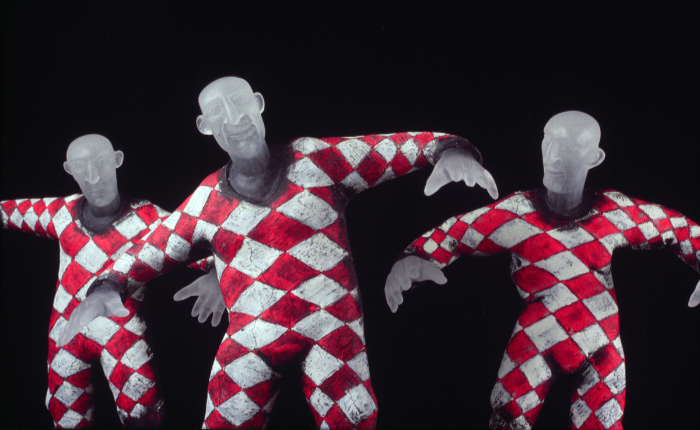
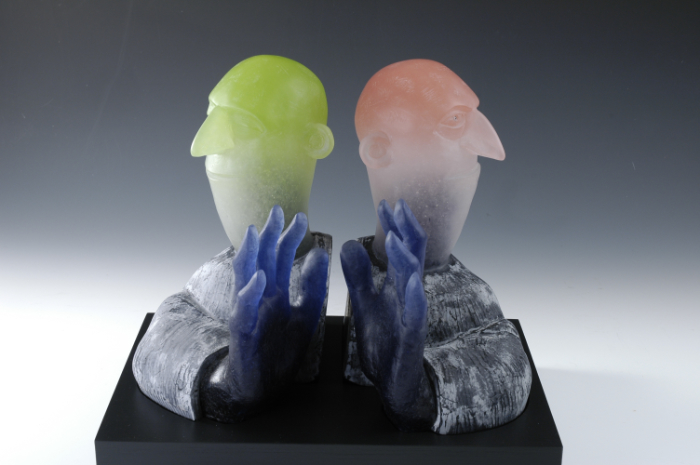

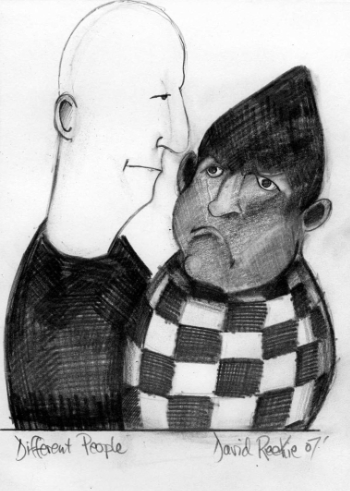
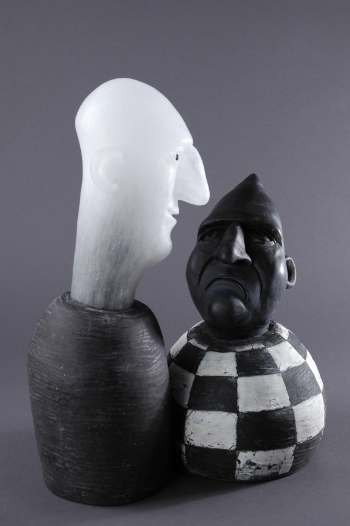

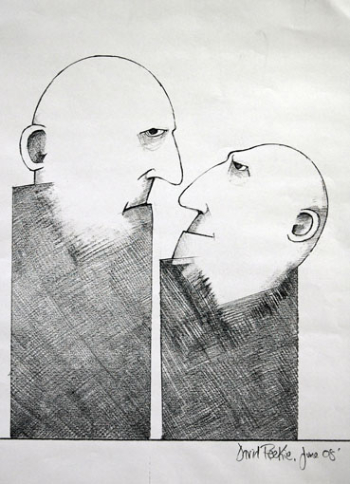
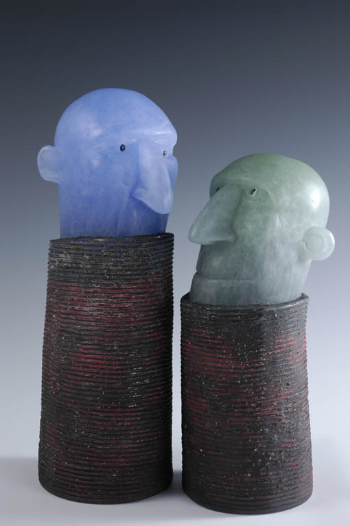
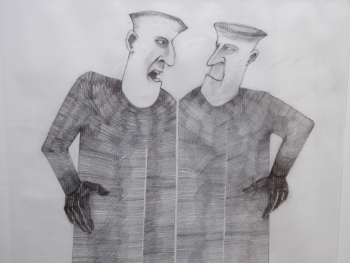
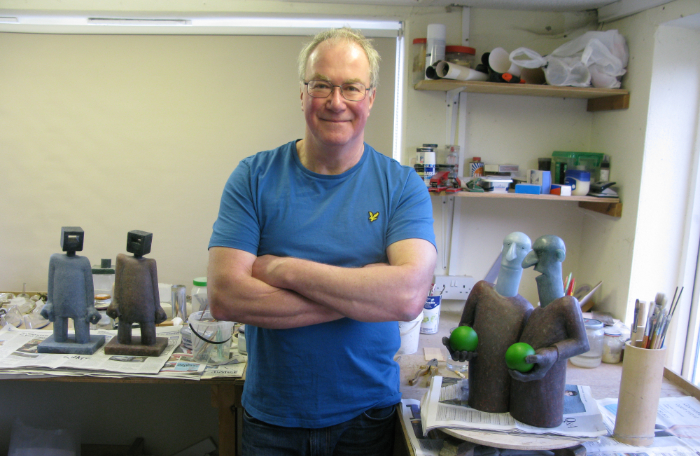 David Reekie was born in Hackney, London. After studying at Stourbridge College of Art (1967-70), he moved to Birmingham College of Art Education (1972-73), he became Fellow in Glass at Lincolnshire and Humberside Arts from 1975-80. He was a founder member of British Artists in Glass (1976).
David Reekie was born in Hackney, London. After studying at Stourbridge College of Art (1967-70), he moved to Birmingham College of Art Education (1972-73), he became Fellow in Glass at Lincolnshire and Humberside Arts from 1975-80. He was a founder member of British Artists in Glass (1976).